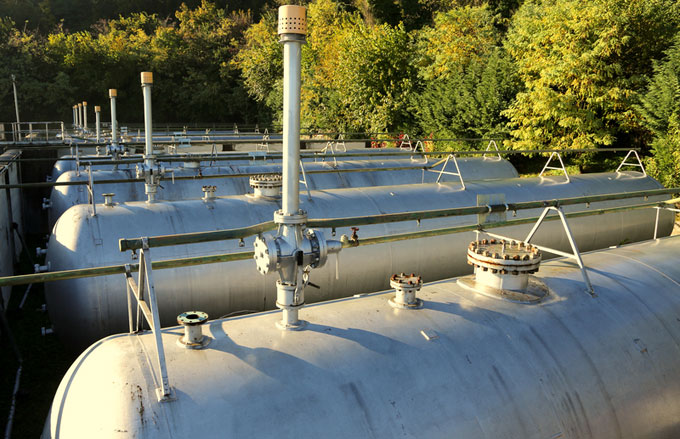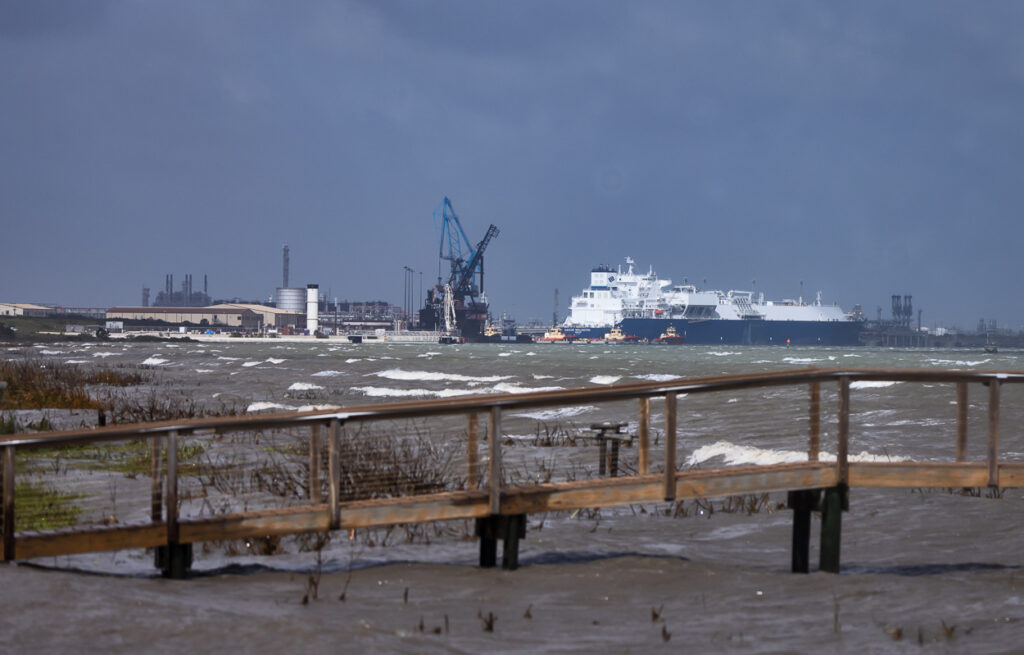By Dana Nuccitelli. Originally posted on Yale Climate Connections.
President Trump’s EPA is moving to roll back 2016 Obama administration methane leak regulations for key parts of the oil and gas industry, another example of what seems an across-the-board repudiation of Obama-era environmental and climate change initiatives. The new proposal, if made final, is certain to face legal challenges, with its ultimate fate perhaps being decided only by the administration in office in 2021.
EPA Administrator Andrew Wheeler in late August signed and later announced a proposed rule that would significantly weaken the methane leak reporting regulations. The proposed approach generally would allow transmission and storage sectors of the industry to self-regulate and self-report leaks of the highly-potent greenhouse gas.
In a prepared statement, Wheeler said “methane is valuable, and the industry has an incentive to minimize leaks and maximize its use.” He said that since 1990, “methane emissions across the natural gas industry have fallen by nearly 15 percent,” and that the new EPA approach “should not stifle this innovation and progress.” Separate rules on volatile organic chemicals “also reduce methane,” making the existing rule “redundant,” Wheeler argued.
Some large oil and gas companies, including BP, Exxon, and Shell, had voiced opposition to the new rules rollback.
But smaller companies and the industry’s principal trade association, the American Petroleum Institute, with more than 620 oil and gas company members, had pushed for weakening the methane regulations. They argue that mandated leak inspections are too costly and could make operation of small, often-leaky wells uneconomical. Wheeler appeared persuaded by these arguments, announcing that the new plan “removes unnecessary and duplicative regulatory burdens from the oil and gas industry” and will save fossil fuel companies around $100 million over the next six years.
The larger oil and gas companies appear to have opposed the new EPA move at least in part because their natural gas interests benefit from being seen as a climate-friendly alternative to coal, and a “bridge fuel” for the transition from coal to renewable energy.
But some scientific research has suggested that methane leakage from natural gas infrastructure such as fracking can erase much of its claimed climate benefits. For instance, authors of a 2018 study published in Science found that the amount of methane resulting from leaks exceeds by 60 percent the estimates made by EPA. “Considerable amounts of the greenhouse gas methane leak from the U.S. oil and natural gas supply chain,” the authors of that study wrote. They said the difference between EPA’s estimates and their own are the result of “current inventory methods [that] miss emissions that occur during abnormal operating conditions.”
Methane and CO2 Comparisons
Carbon dioxide exceeds by a factor of more than 200 times the levels of methane in Earth’s atmosphere, but methane is a much more potent greenhouse gas.
The Intergovernmental Panel on Climate Change (IPCC) in 2013 estimated that the greenhouse effect from methane is 34 times stronger than carbon dioxide over a 100-year period, and 86 times stronger over a 20-year period. Its potency decreases over time because methane is a relatively short-lived greenhouse gas, mostly breaking down under chemical reactions after about 12 years, whereas carbon dioxide persists in the atmosphere for centuries.
However, a 2017 study noted that most of the heat trapped by methane and other greenhouse gases is absorbed by the oceans and transported through Earth’s climate system for hundreds of years. As a result, their effects on climate impacts like sea-level rise last well beyond just the individual greenhouse gases’ atmospheric lifetimes.
Overall, methane is responsible for about 16 percent of human-caused global warming, carbon dioxide for 65 percent.
Methane levels in the atmosphere had flattened out between the years 2000 and 2006 but have risen sharply since then. Scientists have struggled to determine the source of this rise — could it be from agriculture (e.g. cattle burps), tropical wetlands, and/or fossil fuels?
Some previous studies have suggested agriculture could be the primary source, but an August 2019 study in Biogeosciences concluded, “shale-gas production in North America over the past decade may have contributed more than half of all of the increased [methane] emissions from fossil fuels globally and approximately one-third of the total increased emissions from all sources globally over the past decade … the commercialization of shale gas and oil in the 21st century has dramatically increased global methane emissions.”
Shale gas production has boomed in the U.S. in recent years as a result of a rapid expansion of fracking, lending weight to this conclusion. And the industry is poised to continue expanding — a recent report from the advocacy group Food & Water Watch found more than 700 fracked gas infrastructure projects recently built or proposed for development in the U.S.
With the world struggling to meet the Paris climate goals, and America’s policies and commitments in particular described by the Germany-based international scientific group Climate Action Tracker as “critically insufficient,” the EPA methane regulations had been seen by some proponents as a way for the U.S. to significantly curb its global warming contribution. Instead, the Trump EPA has decided to relax those rules along with 83 other environmental regulations, according to a tally compiled and reported by The New York Times.
The EPA methane rule, if it’s made final and promulgated after a 60-day comment period, is certain to be challenged in court. Both the Natural Resources Defense Council and California Attorney General Xavier Becerra threatened to sue if the rule moves forward as proposed. A final rule may not go into effect until after the next 2020 presidential election, so its actual fate may lie with the next administration, whether a second Trump administration or that of a Democratic successor.
Subscribe to our newsletter
Stay up to date with DeSmog news and alerts






